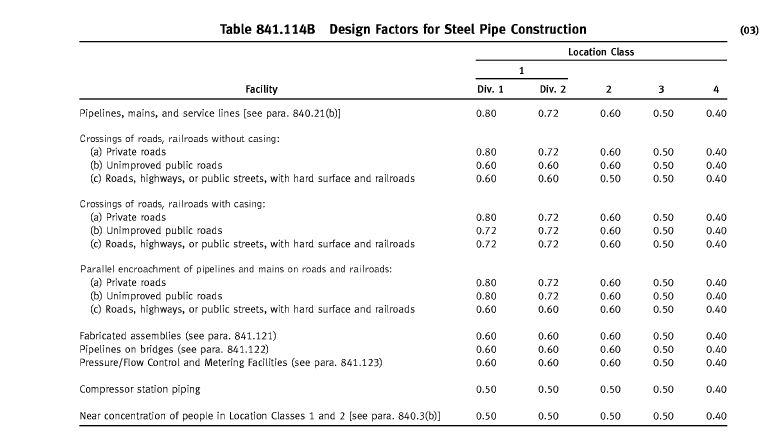Hi everyone, I'm working on aa pipeline stress analysis crossing the railway and I'm referring to API RP 1102 (2017) and ASME B31.4 -2006.
Starting from API RP 1102
My pipe can pass the "allowable stress check“ with 0.72SMYS. Let's call F1=0.72
However, it failed for the "total effective stress check" with 0.72SMYS. Calling F2=0.72
I'm trying to find out that for the total effective stress check, I can use 0.9 SMYS instead of 0.72. (Does F2 need to equal to F1?)
The words in API RP 1102 are vague, it only mention that F2 should be consistent with standard practice or code requirement.
Then I went to B31.4, in table 403.3-1, it does mention that the "effective stress at railroad" can use the F2=0.9. However I cannot confirm if the two codes are talking about same case.
Does anyone perform the analysis before and could share some light? I don't feel very comfortable to bring the design factor from 0.72 to 0.9 for the gas pipe without a solid reference....
Thanks ahead!
Starting from API RP 1102
My pipe can pass the "allowable stress check“ with 0.72SMYS. Let's call F1=0.72
However, it failed for the "total effective stress check" with 0.72SMYS. Calling F2=0.72
I'm trying to find out that for the total effective stress check, I can use 0.9 SMYS instead of 0.72. (Does F2 need to equal to F1?)
The words in API RP 1102 are vague, it only mention that F2 should be consistent with standard practice or code requirement.
Then I went to B31.4, in table 403.3-1, it does mention that the "effective stress at railroad" can use the F2=0.9. However I cannot confirm if the two codes are talking about same case.
Does anyone perform the analysis before and could share some light? I don't feel very comfortable to bring the design factor from 0.72 to 0.9 for the gas pipe without a solid reference....
Thanks ahead!

